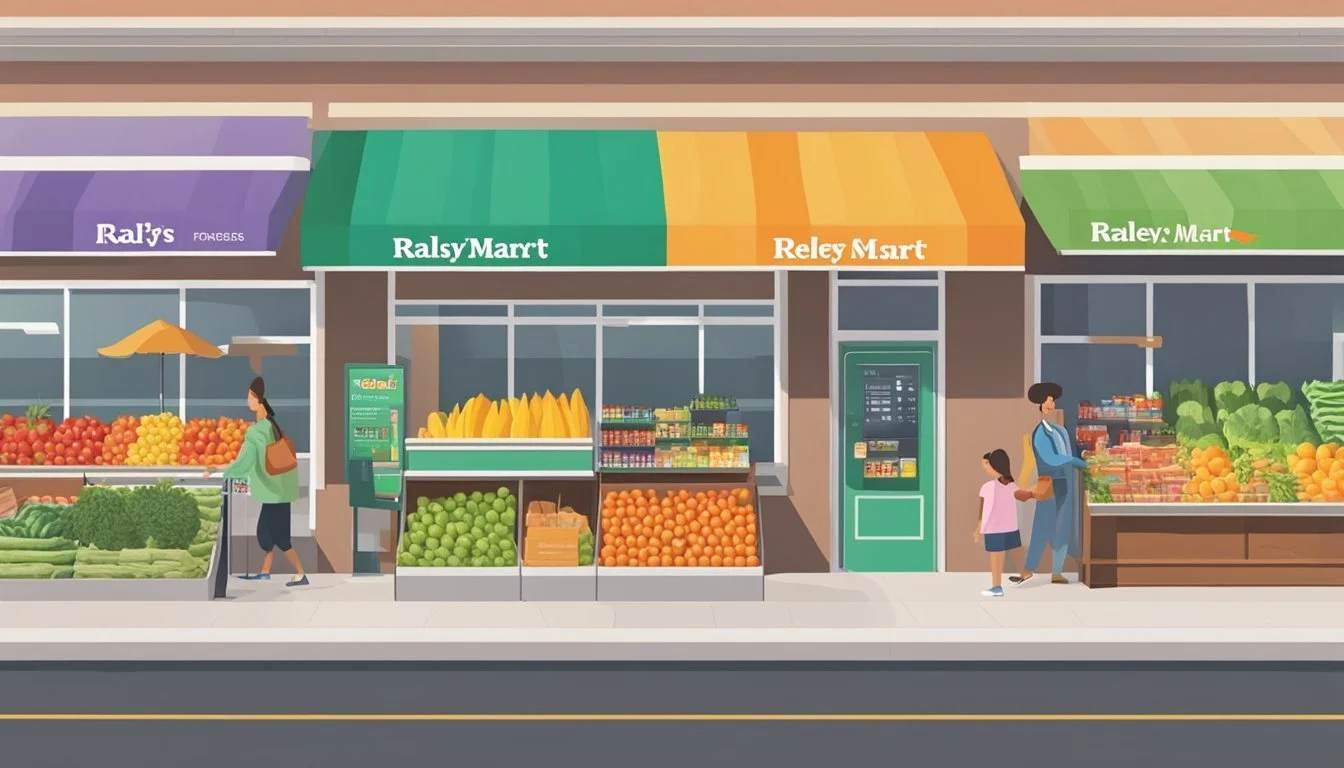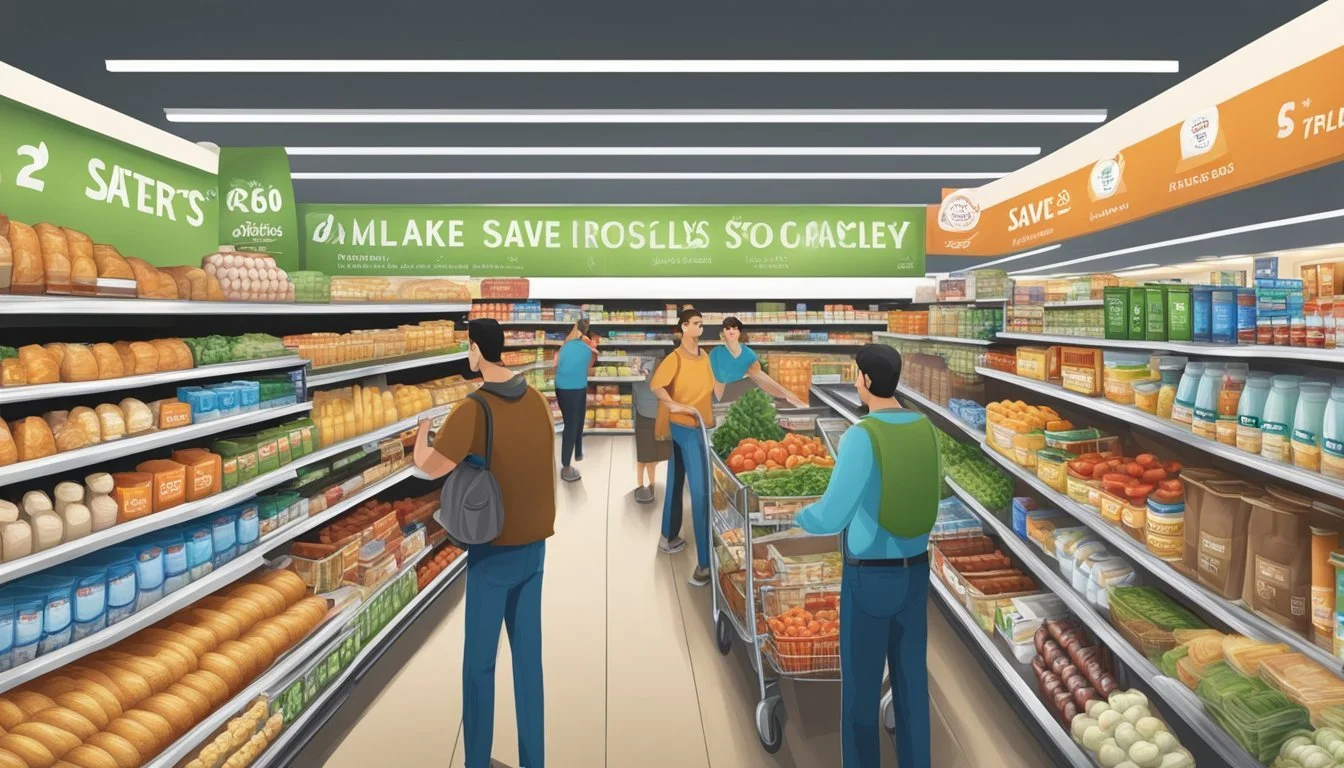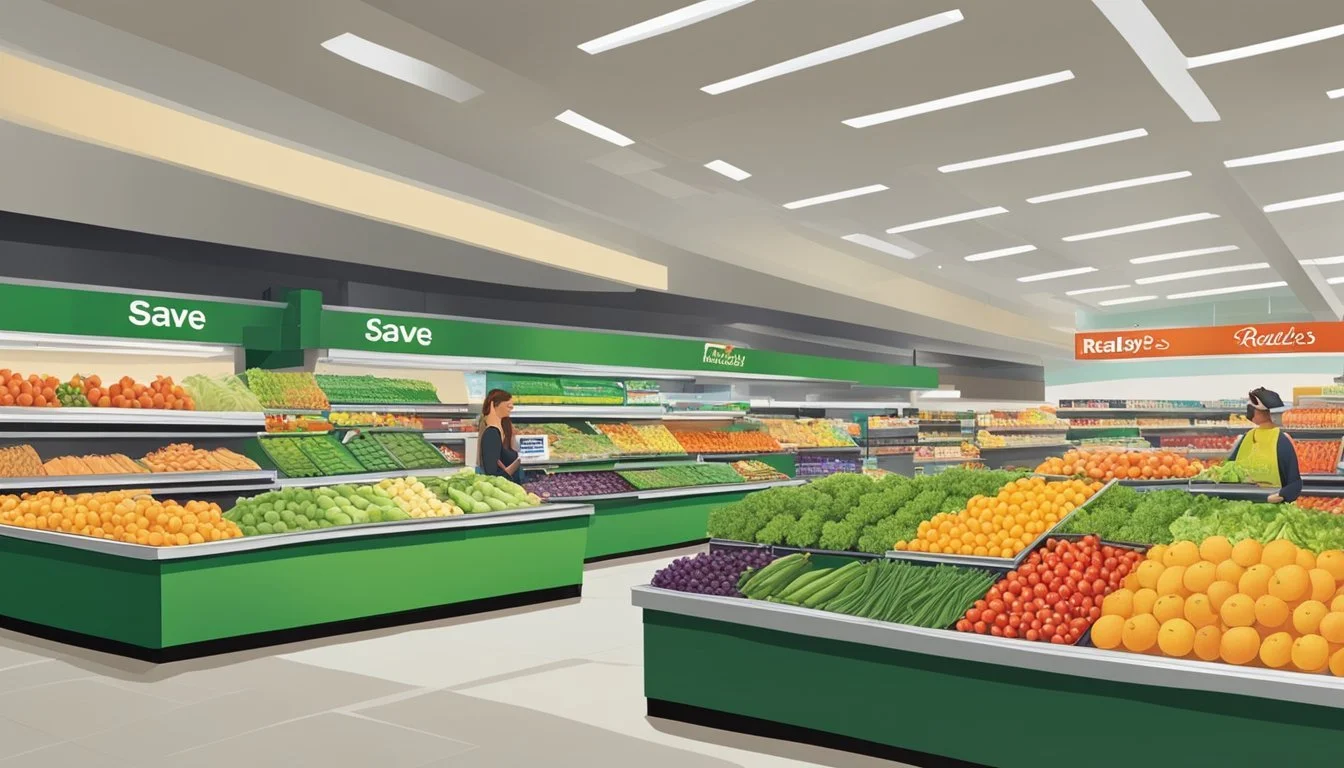Raley's vs Save Mart
A Comprehensive Comparison of Quality and Value
Raley's and Save Mart are two popular grocery store chains in California's Central Valley. Both offer a wide range of products and services to meet shoppers' needs. While they share similarities, each store has its own unique strengths and weaknesses that set them apart.
For overall value and pricing, Save Mart tends to edge out Raley's with generally lower prices on everyday items. Save Mart is known for its competitive pricing strategies and frequent sales. Raley's, on the other hand, often focuses on higher-quality products and specialty items, which can come with a higher price tag.
Product selection varies between the two stores. Raley's typically offers a larger variety of gourmet and organic options, catering to health-conscious consumers and those seeking unique ingredients. Save Mart excels in providing a solid selection of traditional grocery items at affordable prices. Both stores maintain well-stocked produce sections, though the quality and freshness can vary by location.
Company Overview
Raley's and Save Mart are two prominent grocery chains in California with rich histories and distinct brand identities. Both companies have grown from humble beginnings to become major players in the competitive supermarket industry.
History of Raley's
Raley's was founded in 1935 by Thomas P. Raley in Placerville, California. The company started as a single store and expanded steadily over the decades. By the 1960s, Raley's had established itself as a regional powerhouse in Northern California.
In the 1980s and 1990s, Raley's acquired several other grocery chains, including Bel Air Markets and Nob Hill Foods. This strategy allowed the company to diversify its offerings and expand its market presence.
Today, Raley's operates over 120 stores across California and Nevada. The company remains family-owned and is known for its focus on quality products and customer service.
History of Save Mart
Save Mart Supermarkets began in 1952 when Nick Tocco and Mike Piccinini opened their first store in Modesto, California. The company grew rapidly in the Central Valley region, capitalizing on the area's agricultural abundance.
Throughout the 1980s and 1990s, Save Mart expanded through acquisitions, including the purchase of several Albertsons stores in 2006. This move significantly increased Save Mart's footprint in Northern California.
Save Mart now operates over 200 stores under various banners, including Save Mart, Lucky, and FoodMaxx. The company is recognized for its strong ties to local communities and support of regional farmers.
Brand Identity and Market Presence
Raley's positions itself as a premium grocery retailer, focusing on high-quality products and personalized customer experiences. The company has introduced innovative concepts like Raley's O-N-E Market, emphasizing organic, nutrition, and education.
Save Mart, on the other hand, targets a broader customer base with a focus on value and fresh produce. The company leverages its Central Valley roots to highlight connections with local farmers and suppliers.
Both chains have strong regional presences but face increasing competition from national chains and online retailers. Raley's and Save Mart continue to adapt by investing in technology, expanding their private label offerings, and enhancing their e-commerce capabilities.
Product Selection and Quality
Raley's and Save Mart differ in their product offerings and quality standards. Both stores aim to provide a wide range of options to meet diverse customer needs, but they have distinct strengths in certain areas.
Meat and Produce Offerings
Raley's takes pride in its high-quality meat department, offering a selection of prime cuts and locally sourced options. Their butchers provide custom cuts upon request. The produce section features a variety of fresh fruits and vegetables, with an emphasis on seasonal and regional items.
Save Mart's meat department offers competitive prices on popular cuts. Their produce section is known for its affordability and includes a mix of conventional and organic options. Save Mart partners with local farmers to provide fresh, in-season produce.
Both stores maintain strict quality control measures for their meats and produce, but Raley's often receives higher marks for overall freshness and presentation.
Organic and Specialty Foods
Raley's has a more extensive organic and specialty foods selection. They offer a wide range of organic produce, meats, and pantry items. Their shelves are stocked with gluten-free, vegan, and international specialty products.
Save Mart's organic offerings are more limited but growing. They focus on providing popular organic staples at competitive prices. The specialty foods section is smaller than Raley's but includes common allergen-free and diet-specific options.
Raley's caters more to health-conscious and gourmet shoppers, while Save Mart aims to provide accessible organic choices for budget-minded customers.
Bakery and Prepared Foods
Raley's bakery department is known for its artisanal bread, custom cakes, and gourmet pastries. They offer a variety of freshly baked goods daily. The prepared foods section includes a salad bar, hot food bar, and chef-prepared meals for easy grab-and-go options.
Save Mart's bakery provides a selection of fresh bread, cakes, and pastries at affordable prices. Their prepared foods section is more modest but offers rotisserie chickens, pre-made sandwiches, and ready-to-heat meals.
Raley's generally receives higher praise for the quality and variety of its bakery and prepared foods, while Save Mart focuses on providing convenient options at lower price points.
Pricing and Value
Raley's and Save Mart employ different pricing strategies to attract customers. Their approaches to everyday prices, promotions, and loyalty programs shape the overall value proposition for shoppers.
Comparison of Everyday Prices
Raley's typically maintains higher everyday prices compared to Save Mart. The price difference is most noticeable on national brand items and specialty products. Save Mart focuses on keeping prices low across the board, especially on staple items and generic alternatives. For example, a gallon of milk at Save Mart may cost $3.49, while Raley's might price it at $3.79.
Save Mart's pricing strategy aligns more closely with discount chains, making it an attractive option for budget-conscious shoppers. Raley's higher prices often reflect its emphasis on premium and organic offerings.
Sale Prices and Promotions
Both stores run weekly sales and use loss leaders to draw customers. Raley's tends to offer deeper discounts on select items, sometimes cutting prices by 40-50% on featured products. Save Mart's sales are generally more modest but cover a broader range of items.
Raley's circulars often highlight gourmet and specialty items at reduced prices. Save Mart focuses on family-sized packages and bulk deals in its promotions. Both stores use digital coupons and app-exclusive offers to provide additional savings.
Loyalty Programs and Savings
Raley's Something Extra rewards program offers personalized deals and accumulates points for future discounts. Members receive targeted offers based on purchase history. Save Mart's digital rewards program provides instant savings at checkout and customized coupons.
Save Mart's program is more straightforward, with immediate discounts on selected items. Raley's system requires more engagement but can lead to larger savings for frequent shoppers. Both stores offer gas rewards, linking grocery purchases to fuel discounts at participating stations.
Shopping Experience
Raley's and Save Mart offer distinct shopping experiences, each with its own strengths and characteristics. The layout, cleanliness, customer service, and accessibility of these stores play crucial roles in shaping customer satisfaction.
Store Layout and Cleanliness
Raley's stores generally feature a more upscale ambiance with wider aisles and a spacious layout. The produce section is often prominently displayed near the entrance, showcasing fresh fruits and vegetables. Departments are clearly marked, making navigation easier for shoppers.
Save Mart typically has a more compact layout, maximizing shelf space. While this can make aisles feel narrower, it allows for a greater variety of products within a smaller footprint. Both chains maintain high cleanliness standards, with regular cleaning schedules throughout the day.
Raley's often receives praise for its well-organized shelves and spotless floors. Save Mart, while clean, may occasionally have more visible signs of customer traffic during peak hours.
Customer Service and Checkout Efficiency
Raley's emphasizes personalized service, with staff members often available to assist customers in finding products or answering questions. The meat and deli counters are usually well-staffed, minimizing wait times.
Save Mart focuses on efficiency, with a streamlined approach to customer service. Self-checkout options are more prevalent in Save Mart stores, catering to customers who prefer a quicker shopping experience.
Both chains train their employees in customer service, but Raley's tends to receive higher marks for staff friendliness and willingness to go the extra mile. Checkout times can vary, with Save Mart often having shorter lines due to its efficiency-focused approach.
Accessibility and Convenience
Raley's stores are often located in more affluent neighborhoods, which can mean fewer locations but potentially closer proximity for some customers. Their stores typically have ample parking and are wheelchair accessible.
Save Mart has a wider distribution of stores, making it more accessible to a broader range of communities. Many Save Mart locations offer extended hours, some operating 24/7, providing greater flexibility for shoppers with varied schedules.
Both chains have invested in online ordering and delivery services, enhancing convenience for customers who prefer to shop from home. Raley's tends to have a more robust online platform, while Save Mart has been expanding its digital offerings to compete in this area.
Community and Environmental Impact
Raley's and Save Mart both prioritize community engagement and environmental stewardship. Their initiatives focus on sustainability, hunger relief, and supporting local causes in California.
Sustainability Initiatives
Raley's emphasizes eco-friendly practices in its operations. The company has implemented energy-efficient lighting and refrigeration systems in stores to reduce electricity consumption. They also prioritize waste reduction through recycling programs and donating unsold food to local food banks.
Save Mart focuses on sustainable packaging and reducing food waste. The chain has introduced reusable bags and encourages customers to bring their own containers for bulk purchases. They partner with local farmers to source fresh produce, minimizing transportation emissions.
Both companies have made efforts to reduce single-use plastics in their stores and offer more sustainable product options to customers.
Community Involvement and Support
Raley's operates the Food For Families program, which collects donations to provide meals for those in need. The company also supports local schools through education grants and sponsorships of youth sports teams.
Save Mart actively participates in community events and fundraisers. They sponsor local food festivals and farmers markets to promote California agriculture. The chain also partners with regional charities to address food insecurity and support families in need.
Both retailers prioritize hiring locally and providing job opportunities within their communities. They offer employee volunteer programs, encouraging staff to give back to their neighborhoods.
Customer Perceptions and Brand Loyalty
Raley's and Save Mart have cultivated distinct reputations among shoppers. Both stores have earned loyal customer bases through their unique approaches to service, product quality, and pricing strategies.
Survey Results and Customer Ratings
Recent surveys reveal interesting insights into customer perceptions of Raley's and Save Mart. Raley's consistently scores higher in areas like product quality and customer service. A Consumerpedia Podcast episode highlighted Raley's 4.2/5 star rating compared to Save Mart's 3.8/5.
Save Mart, however, edges out Raley's in affordability ratings. 68% of surveyed customers cited competitive pricing as their primary reason for shopping at Save Mart.
Raley's loyalty program has proven effective, with 72% of members reporting increased store visits. Save Mart's rewards system, while newer, shows promise with a 15% growth in participation over the past year.
Analysis of Customer Reviews
Customer reviews paint a nuanced picture of both chains. Raley's receives praise for its fresh produce and friendly staff. One researcher noted a 30% higher positive sentiment in Raley's reviews regarding product freshness compared to Save Mart.
Save Mart garners appreciation for its wide selection and convenient locations. Reviews frequently mention the store's competitive prices on everyday items.
Both chains face criticism for long checkout lines during peak hours. Raley's customers express frustration with higher prices, while Save Mart reviews sometimes note inconsistent product quality across different store locations.
Social media sentiment analysis reveals Raley's has a more engaged online community, with 25% higher interaction rates on their posts compared to Save Mart.
Comparative Analysis
Raley's and Save Mart represent two distinct grocery shopping experiences in California. Each store has unique strengths and weaknesses that cater to different consumer preferences and needs.
Pros and Cons of Each Grocery Store
Raley's offers a wide selection of gourmet and imported items, appealing to shoppers seeking specialty products. The store is known for its high-quality offerings, but this comes at a premium price point.
Save Mart, on the other hand, is a local favorite that provides a more budget-friendly shopping experience. It offers a broad range of products at competitive prices, making it attractive for families and cost-conscious consumers.
Both stores have their drawbacks. Raley's higher prices may deter budget shoppers, while Save Mart's focus on affordability might mean a more limited selection of premium or specialty items.
Market Position and Growth Prospects
Raley's positions itself as a premium grocery store, competing with chains like Whole Foods in the higher-end market segment. Its focus on quality and specialty items allows it to maintain a loyal customer base despite higher prices.
Save Mart targets a broader market, competing more directly with stores like Walmart and Target on price. This positioning has allowed Save Mart to expand its presence, as evidenced by its move to larger locations in some areas.
Both stores face challenges from discount chains and online grocery services. Raley's may need to justify its higher prices through superior service and unique offerings. Save Mart must continue to balance affordability with quality to retain customers.
Recommendations for Different Shopper Types
For health-conscious consumers seeking organic and specialty items, Raley's offers a more curated selection. Its gourmet options and higher-quality produce make it suitable for those prioritizing premium ingredients.
Budget-conscious families and individuals may find better value at Save Mart. Its competitive pricing and frequent deals can significantly reduce grocery bills without sacrificing too much variety.
Shoppers who enjoy cooking with unique ingredients might prefer Raley's for its imported and gourmet selections. Those who prioritize convenience and everyday essentials may find Save Mart more suitable.
For the best of both worlds, some consumers might split their shopping between the two stores. They could purchase specialty items from Raley's while doing their main grocery run at Save Mart to balance quality and affordability.
Additional Services and Features
Raley's and Save Mart offer various conveniences beyond traditional grocery shopping. Both chains have expanded their services to meet evolving customer needs, including online ordering and specialized in-store offerings.
Grocery Delivery and Online Shopping
Raley's provides eCart, an online shopping service with curbside pickup and home delivery options. Save Mart partnered with Instacart to offer similar services. Both stores allow customers to purchase groceries, including alcohol, through their online platforms. Save Mart's online service covers approximately 90% of its in-store inventory.
Raley's Something Extra loyalty program integrates with their online shopping experience, allowing customers to earn rewards on digital purchases. Save Mart's digital coupons and weekly ads are accessible through their website and mobile app, helping shoppers plan their trips and save money.
In-Store Special Services
Raley's stores often feature full-service pharmacies, offering prescription fulfillment and immunizations. Many locations include floral departments with custom arrangements and gift options. Their stores typically have extensive deli counters with prepared foods and made-to-order sandwiches.
Save Mart provides in-store banking services at select locations, enhancing convenience for shoppers. Their stores usually offer fresh sushi prepared daily and rotisserie chickens. Some Save Mart locations feature specialty cheese counters and bulk food sections, catering to customers seeking variety and value.
Both chains prioritize local sourcing, with dedicated sections for regional produce and products. This commitment supports local economies and provides customers with fresh, seasonal options.
Conclusion
Both Raley's and Save Mart offer unique shopping experiences for California consumers. Raley's tends to focus on high-quality, gourmet, and specialty items. This appeals to shoppers seeking premium products, though at higher prices.
Save Mart positions itself as a more budget-friendly option. Their stores carry a wide selection of everyday groceries at competitive rates. Families looking to stretch their food budget may find Save Mart's pricing structure appealing.
Product quality can vary between locations for both chains. Some Save Mart stores receive praise for fresh produce, while others fall short. Raley's generally maintains consistent quality across departments.
Price-conscious shoppers may prefer Save Mart's lower overall costs. However, Raley's frequent promotions and loyalty program can offset some of the price differences for regular customers.
Ultimately, the choice between Raley's and Save Mart depends on individual priorities. Those valuing selection and quality may lean towards Raley's. Budget-focused families might find Save Mart a better fit for their needs.








